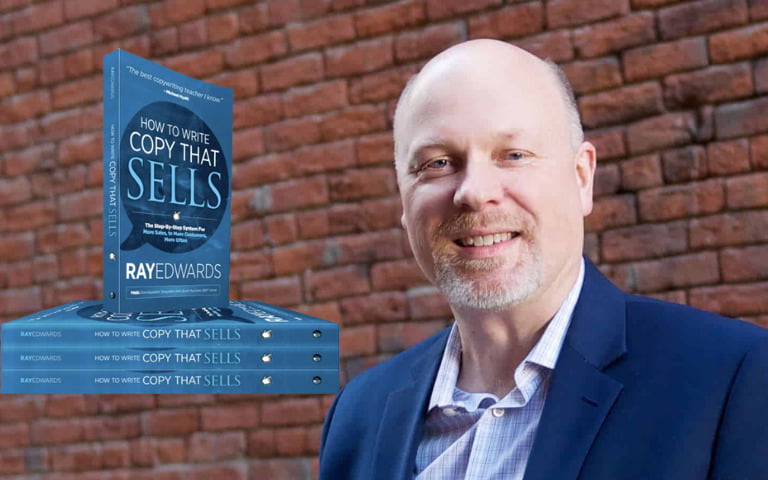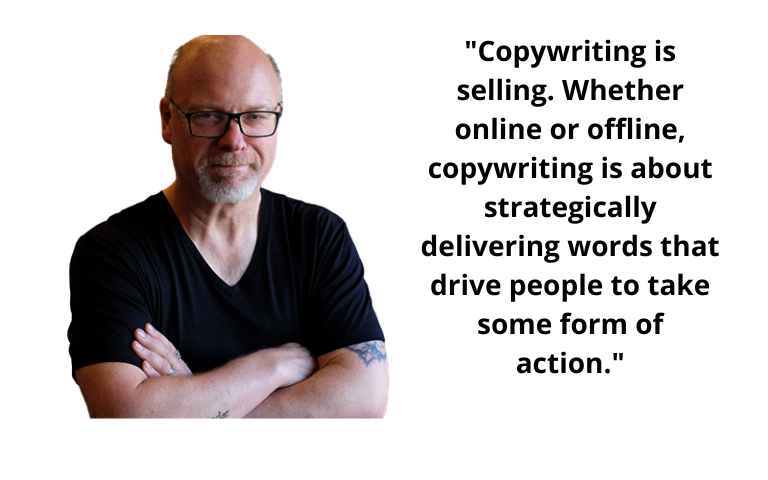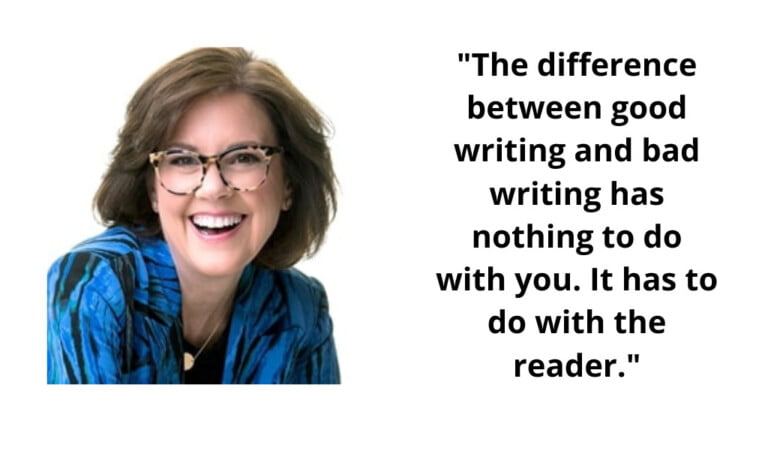Copywriting Psychology: Inside the Mind of Your Customer
Disclaimer: This post may contain affiliate links. For more information, please visit our Disclaimer Page.
Introduction
Ray Edwards is a highly experienced copywriter and marketing consultant who has helped countless businesses boost conversions and sales through compelling copy. In his book “How to Write Copy That Sells,” Edwards provides a structured framework and practical techniques for writing persuasive sales copy that drives action and conversions.
The book equips readers with proven methods for grabbing attention, building rapport, overcoming objections, and prompting the desired response. For anyone looking to improve their copywriting skills and create content that sells, Edwards’ book is an invaluable resource full of actionable tips from a seasoned expert.

PASTOR Copywriting Framework
The PASTOR framework developed by Ray Edwards provides a structured approach for writing compelling sales copy that converts readers into buyers. This acronym outlines the key elements to include:
- P – Person, Problem, Pain: The first step is identifying and understanding your target audience and their struggles. You need to define the person you want to reach, the core problem they face, and the associated pain points caused by this problem. Put yourself in their shoes to grasp their frustrations, obstacles, and desires. This allows you to craft copy that truly resonates by addressing their real needs.
- A – Amplify, Aspirations: Next, you must amplify the problem to convey its negative impacts fully. Vividly illustrate how the problem makes life more difficult and limits their aspirations. Paint a picture of the paradigm shift that would come with solving it. Help them visualize the possibilities and the version of themselves they wish to become. Describe the desired change and aspirations your offer can help achieve.
- S – Solution, System: Now, transition to introducing your solution to the problem and the system or process for implementing it. Please explain how your product or service will ease their pain points and remove the obstacles limiting their goals. Share the specifics of how it works to solve their challenges. This establishes value and positions your offering as the ideal remedy.
- T – Transformation, Testimonials: Highlight the incredible transformation that will unfold by applying your solution. Paint a before-and-after picture of how the problem will disappear, and life will improve. Use real-world testimonials as social proof that the solution delivers as promised. These elements enhance credibility and instill excitement.
- O – Offer: Make a compelling offer to help them achieve their aspirations. Tailor this directly to the problem/solution dynamic. The offer should spell out what they get, the investment required, and the immense value compared to costs. Sweeten it with bonuses, guarantees, or discounts to encourage action.
- R – Response: Finally, prompt the desired response, which is taking action to purchase. Give clear directions for how to accept the offer and gain the solution. Reduce friction surrounding the response. Reiterate the benefits of taking action now rather than delaying. Urge them towards their breakthrough.
Following this PASTOR outline when crafting copy helps engage readers by tapping into their desires, highlighting the transformation your offering can generate, and motivating response. The table below summarizes the framework:
| Step | Focus |
|---|---|
| P | Person, Problem, Pain |
| A | Amplify, Aspirations |
| S | Solution, System |
| T | Transformation, Testimonials |
| O | Offer |
| R | Response |
This structured approach is invaluable for writing copy that truly resonates with the target audience and compels them to take action. Ray Edwards provides a proven formula for more effective sales messaging through the PASTOR framework.
Key Copywriting Techniques
In addition to the PASTOR framework, Ray Edwards shares numerous powerful copywriting techniques throughout his book to employ when writing sales copy:
- Attention-grabbing headlines: Your headlines are often the first and only thing readers see before deciding whether to continue. Make them ultra-compelling to capture attention and pull readers into your copy. Use urgency, specificity, benefits, curiosity, and brevity.
- Subheads for skimmability: Break up copy with descriptive subheads. This allows skimmers to grasp the core ideas and choose sections to read quickly. Subheads make your content more scannable.
- Rapport building: Build rapport and connection with readers by being transparent, sharing your journey, and showing you understand their struggles. This rapport makes them more receptive to your solution.
- Social proof: Incorporate testimonials, case studies, expert backing, and reviews as social proof that your solution delivers results. People rely on others’ experiences when making buying decisions.
- Value justification: Demonstrate how your offer’s benefits outweigh the investment or increase value exponentially. Show proof through examples, financial calculations, comparisons, etc.
- Risk reversal: Reduce perceived risk by including guarantees, warranties, trial periods, or return policies. This reassures hesitant customers to leap confidently.
- Incentives: Sweeten the offer with free bonuses, giveaways, samples, or discounts. People love getting more for less. Incentives can tip the scales for those on the fence.
- Direct CTA: Use clear, concise calls to action to tell readers how to respond explicitly. Reduce confusion about the next steps. Make it easy for motivated readers to convert.

Copywriting Checklist:
Mastering these techniques allows you to create highly compelling copy. Combined with the PASTOR framework, you have a powerful sales writing skillset. Use this checklist when writing or evaluating copy to ensure you employ these essential elements for persuasive messaging that converts.
Applying the PASTOR Framework
Now let’s walk through an example of applying the PASTOR copywriting framework to craft a compelling sales message that resonates with readers and motivates the desired action.
Imagine we want to promote a weight loss program. Here’s how we would apply the PASTOR steps:
- P – Person, Problem, Pain
- Our person is someone struggling with being overweight and unable to lose weight.
- The problem is that despite their best efforts with diets and exercise, they haven’t achieved their weight loss goals.
- This has caused pain such as low self-esteem, health issues, not fitting in clothes, and feeling stuck
- A – Amplify, Aspirations
- Amplify the problem by describing how their weight struggle is ruining their confidence, limiting activities, and negatively impacting their life.
- Paint a picture of the aspirations our program can help achieve – feeling healthy and attractive, having the energy to enjoy life, buying new clothes, pride and confidence.
- S – Solution, System
- Introduce our proven 3-step system that will finally help them lose weight.
- Explain how it solves the problem through customized meal plans, Accountability coaching, and community support.
- Share the system components and how each contributes to weight loss success.
- T – Transformation, Testimonials
- Describe the incredible transformation people experience – losing 50+ pounds, looking and feeling better than ever.
- Include powerful testimonials about life-changing results from real customers.
- O – Offer
- Make a limited-time offer for our 3-month program with bonus items and discounted pricing -Outline exactly what they get and the step-by-step process.
- R – Response
- Prompt the desired response to take advantage of the discount by purchasing now.
- Make it easy by including links, phone numbers, etc.
Copy Structure:
This example demonstrates how following the PASTOR framework guides you through crafting a resonant sales message tailored to the target audience and their needs. The result is persuasive copy that connects with readers and compels them to respond.
Conclusion
Ray Edwards’ book “How to Write Copy That Sells” is invaluable for any business owner, entrepreneur, marketer, or copywriter looking to improve their sales messaging.
His time-tested PASTOR copywriting framework gives a proven structure for a compelling copy that engages readers, addresses their needs and desires, and motivates action. Combined with his numerous copywriting techniques – like crafting gripping headlines, incorporating social proof, and offering incentives – you have a complete skillset for creating high-converting sales content.
Edwards distills decades of copywriting expertise into an accessible guide for writing persuasive copy that sells. Whether you are outsourcing copywriting or writing it yourself, this book will help strengthen your sales messaging and boost conversions. For anyone seeking to harness the power of compelling copywriting, “How to Write Copy That Sells” is an indispensable addition to your marketing toolkit.
Quotes from “How to Write Copy That Sells” by Ray Edwards
“There is virtually no other skill that can make you as much money as copywriting. Nearly all internet millionaires know this secret: more than their product, more than their traffic-generation techniques, more than their email campaigns, more than who their joint-venture partners might be, it’s their copywriting that has made them rich.”
“What will motivate people to buy your product, invest in your service, or accept your idea is usually not the beautiful outcome framed in a positive light on its own. It is required rather, that before painting the picture of the “paradise” they seek, you must get them to fully experience the consequence of not solving the problem.”
“Once you have described the problem, amplified the consequences of not solving it, and painted the picture of paradise, it’s time to share the story of how the problem can be solved.”
“People don’t buy stuff, they buy transformations.”
“He who has a thing to sell and goes and whispers in a well, is not so apt to get the dollars as he who climbs a tree and hollers.”
F.A.Q. about “How to Write Copy That Sells” by Ray Edwards
What is the PASTOR framework?
The PASTOR framework is a copywriting structure developed by Ray Edwards. It provides a step-by-step approach for writing persuasive sales copy:
P – Identify the Person, Problem, and Pain
A – Amplify the problem and desired Aspirations
S – Present your Solution and System
T – Highlight the Transformation and include Testimonials
O – Make an Offer
R – Prompt the desired Response
Following this outline helps craft resonant copy that connects with readers.
What are some key copywriting techniques?
Some top copywriting techniques covered in the book include:
– Attention-grabbing headlines
– Subheads for skimmability
– Building rapport with readers
– Incorporating social proof
– Justifying the value of your offer
– Reducing risk with guarantees
– Using incentives like discounts or bonuses
– Clear calls-to-action
These techniques help create compelling copy that sells.
How can the PASTOR model help my copywriting?
The PASTOR framework provides a proven structure for writing copy. Walking through each step guides you to:
– Understand your audience and what they desire
– Show you grasp their pain points
– Present your solution as the ideal remedy
– Provide social proof your solution works
– Make an appealing offer
– Motivate the desired action
Following this model results in copy that truly resonates with readers and converts.
What makes Ray Edwards an expert on copywriting?
Ray Edwards is an experienced copywriter and marketing consultant. He has helped countless businesses boost sales through effective copywriting. His extensive experience, success, and practical insights make him a trusted expert.
Who can benefit from “How to Write Copy That Sells” by Ray Edwards?
The book is invaluable for business owners, marketers, entrepreneurs, copywriters, and anyone looking to improve their copywriting skills. Whether you write your own copy or work with copywriters, it will strengthen your sales messaging.
Disclaimer: This blog post is a summary or resume of the book and is not intended to dispense the reading of the original book. This post aims to provide a general overview of the book’s main ideas and themes and encourage readers to read the complete book to gain a deeper understanding of the material. The information presented in this post is intended to be something other than a substitute for the original book and should be used as a supplement to, not a replacement for, the entire book. We strongly encourage readers to read the complete book to benefit from its ideas and teachings fully.







